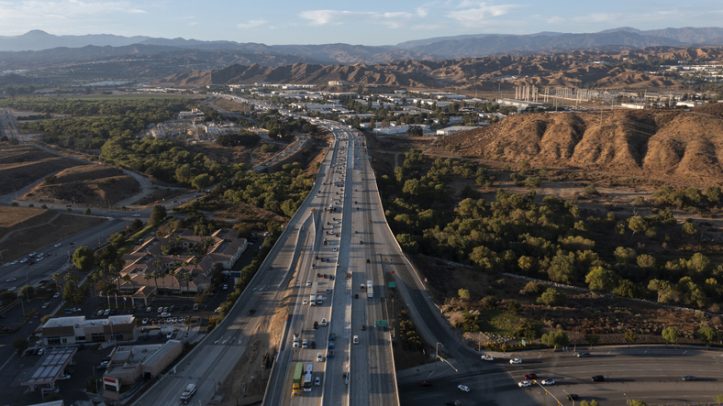
A Deadly Failure on the I-10: How a Catastrophic Truck Crash Exposes Deep Flaws in California’s Licensing and Enforcement Systems
On October 21, 2025, a semi-truck barreled down the Interstate 10 freeway near Ontario, California, and never hit the brakes. In seconds, eight vehicles were crushed, three innocent lives were lost, and multiple others were hospitalized in critical condition.
The driver, 21-year-old Jashanpreet Singh, was not only allegedly under the influence of drugs but also living in the United States illegally, according to the California Highway Patrol. Authorities say Singh had entered the country through the southern border in 2022 and somehow managed to obtain a California commercial driver’s license (CDL) — despite lacking lawful immigration status. (ABC News)
The tragedy on the I-10 is no random “accident.” It’s the foreseeable outcome of a regulatory collapse — one that allowed an unauthorized, allegedly drug-impaired driver behind the wheel of a 40-ton vehicle.
The Crash That Should Never Have Happened
According to reports from AP News, Singh’s semi-truck plowed into stalled traffic near the Vineyard Avenue exit, triggering a fiery chain reaction. Among the dead were a beloved Pomona High School basketball coach and his wife, both described by friends as pillars of their community. (FOX News)
Investigators revealed that Singh never attempted to stop. Preliminary toxicology reports indicate he was under the influence of drugs at the time. He has since been charged with three counts of vehicular manslaughter with gross negligence and one count of felony DUI causing injury. (ABC 7 Los Angeles)
This is not simply a case of one reckless driver — it’s the latest and most glaring symptom of California’s broken trucking oversight.
How Was He Even on the Road? The Licensing and Immigration Failure
Federal records show Singh was released by the Biden administration after crossing the border illegally in 2022 and was later granted employment authorization, which California accepted as sufficient to issue a commercial driver’s license. (New York Post)
This decision flies in the face of federal transportation safety standards under the Federal Motor Carrier Safety Administration (FMCSA), which requires drivers of commercial vehicles to hold valid CDLs issued in accordance with strict federal verification protocols.
California is one of 19 states that allow undocumented immigrants to obtain certain forms of driver’s licenses, but critics argue that extending that policy to commercial licensing — without ironclad federal verification — is an open invitation for tragedy. (Los Angeles Times)
Following the I-10 crash, the U.S. Department of Transportation announced it would re-evaluate California’s CDL protocols and freeze $40 million in federal highway funds pending a review of the state’s compliance with federal safety requirements. (FOX LA)
The Legal Fallout: Criminal Charges and Civil Exposure
Singh pleaded not guilty at his arraignment, but prosecutors are already treating this as a high-profile criminal case with nationwide implications. The vehicular manslaughter charges — paired with DUI — could carry decades in prison.
Civilly, the crash opens a floodgate of lawsuits. Families of the deceased are expected to file wrongful death actions, not only against Singh but also against any trucking company or carrier that employed him. If investigators confirm he was operating as part of a logistics firm, vicarious liability and negligent hiring claims could expose the company to massive damages.
Moreover, if vehicle maintenance records reveal mechanical issues or regulatory non-compliance, product liability and negligence suits could pull in additional defendants — from truck manufacturers to fleet managers.
As any California wrongful death attorney would confirm, the civil exposure in a case involving multiple fatalities, federal regulatory violations, and potential employer negligence is astronomical.
A Systemic Breakdown of Oversight
This catastrophe raises a painful truth: California’s transportation and immigration systems failed in tandem.
The FMCSA’s compliance standards exist to prevent exactly this scenario — yet a state that prides itself on “inclusive licensing” effectively rubber-stamped a CDL for someone who should never have been authorized to drive a commercial truck in the first place.
Federal and state officials are now blaming each other for the lapse, but that finger-pointing doesn’t bring back the three people killed. The system’s permissiveness — granting heavy-vehicle authority to individuals without stable legal status or oversight — turned a policy flaw into a crime scene.
The Broader Implications for Road Safety
Commercial trucking accidents already account for over 5,000 deaths per year in the United States, according to the National Highway Traffic Safety Administration. When unqualified or impaired drivers operate semi-trucks, that number only rises.
This I-10 tragedy is more than another headline — it’s a flashing red warning light for the nation’s transportation integrity and legal accountability.
-
Employers must verify immigration status, CDL validity, and drug testing compliance before placing anyone in a driver’s seat.
-
State agencies must align with federal FMCSA standards to prevent more “gray-area” CDL approvals.
-
Victims’ families deserve justice through both criminal prosecution and civil compensation.
Conclusion: Accountability Can’t Wait
Three people are dead because every safeguard failed — border screening, licensing verification, substance enforcement, and carrier oversight. Until every level of government takes accountability seriously, tragedies like this will keep repeating across American highways.
If you or someone you love has been affected by a truck or multi-vehicle crash, you have legal options.
Contact the car accident lawyers at Banner Attorneys to discuss your rights and seek justice for the harm caused by negligent or unqualified drivers.

